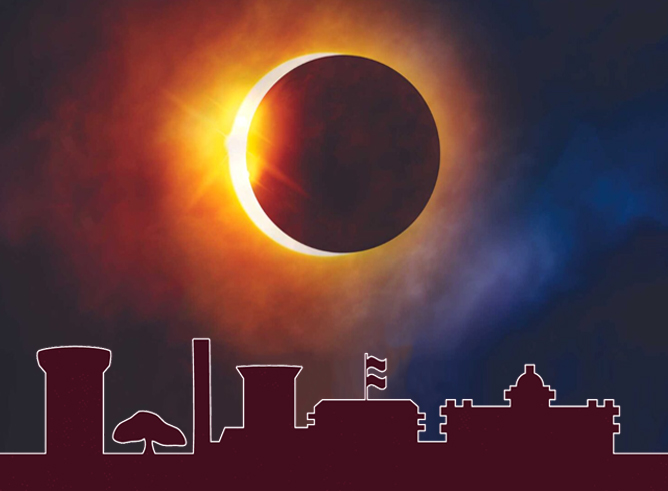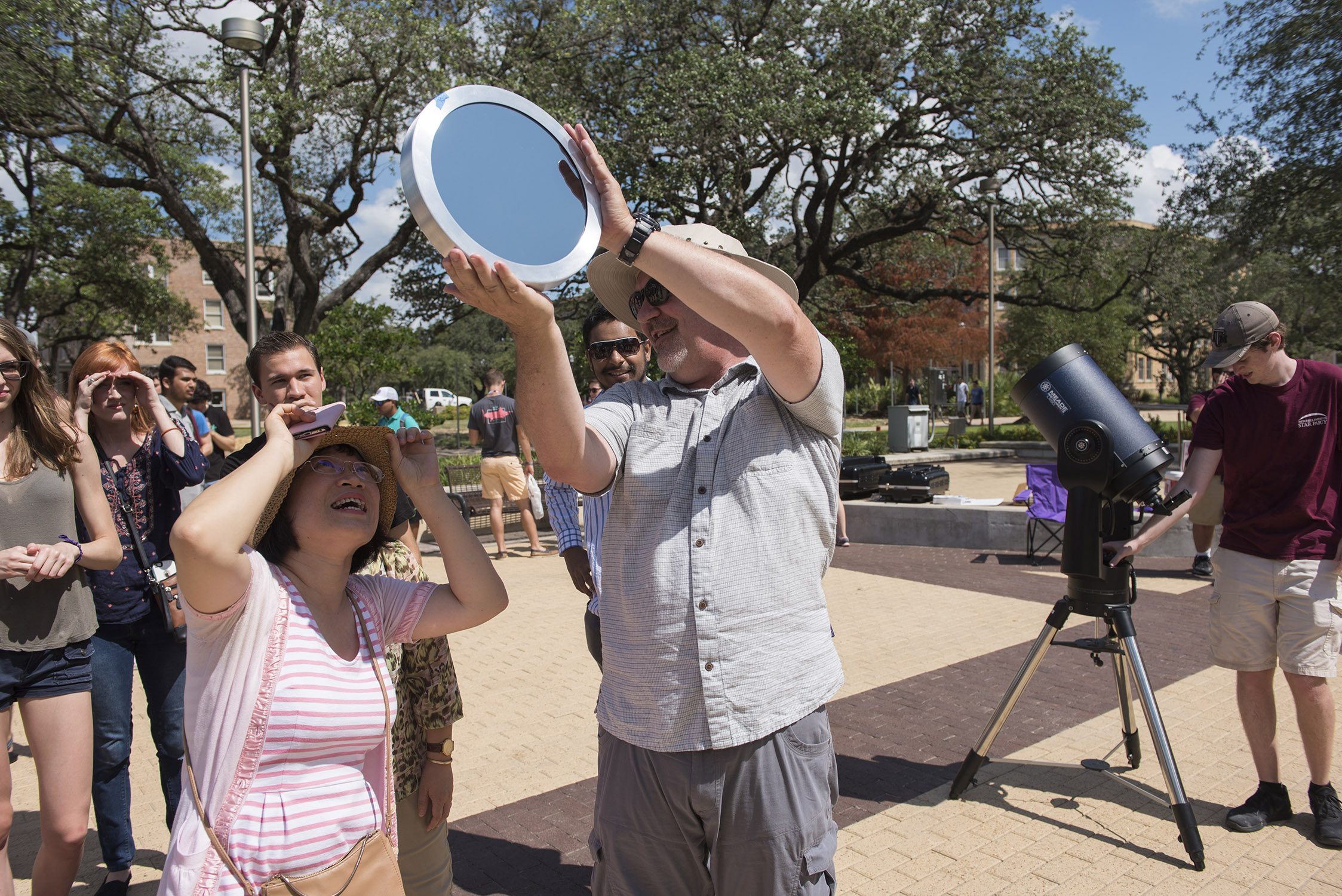
On April 8, parts of Texas will be bathed in shadows as millions of people across North America experience the longest and darkest total solar eclipse since the early 19th century.
A solar eclipse occurs when the moon passes in front of the sun from the perspective of people on Earth, temporarily leaving the planet in shadows. The size of the moon and its distance from the Earth allows it to sometimes cover the face of the sun entirely, creating a total solar eclipse, much like the one many Texans will be treated to on Monday.
When the sun is completely covered by the moon, it is considered totality. However, because the moon is just barely large enough to cover the entirety of the sun, only a small path on Earth’s surface roughly 100 miles wide will be within the path of totality. In addition, onlookers will only get to experience a few minutes inside the darkest part of the moon’s shadow, says Dr. Justin Spilker, an assistant professor in the Department of Physics and Astronomy at Texas A&M University and a member of the George P. and Cynthia Woods Mitchell Institute for Fundamental Physics and Astronomy.
(See NASA's Eclipse Explorer for in-depth, at-a-glance information or a livestream courtesy of the National Science Foundation.)

“During those precious few minutes of totality, you can look at the sun without any protective gear, and you'll be able to see the sun's thin outer atmosphere, the corona, with your unaided eyes,” Spilker said. “The sun's corona is incredibly beautiful on its own, and you'll also be able to see other stars and planets, even though it's the middle of the day.”
In Texas, the eclipse will begin just after noon and end after 3 p.m., Spilker says. Despite the midday occurrence, he notes, the horizon will mimic the colors of sunset, and birds will roost as if it is nighttime, while the air will also become noticeably cooler.
“Then, a few minutes later, the sun will start peeking out from behind the moon again, and the fleeting moment will be gone,” Spilker added. “It will take another few hours for the moon to completely unblock the sun.”
I canceled my classes before the semester even started, and I encouraged all my students to skip their other classes. How often does a professor encourage skipping? But this will be totally worth it.
Although Bryan-College Station is not within the eclipse’s path of totality, cities such as Eagle Pass, Uvalde, Kerrville, northwest San Antonio, most of Austin, Waco and the majority of the Dallas/Fort Worth Metroplex are, along with many smaller towns, Spilker says.
“I highly recommend traveling to be inside the path of totality,” Spilker added. “I promise you it will be worth it, and you will remember those few minutes for a lifetime. Seeing a total solar eclipse with your own eyes is one of the most spectacular sights that nature offers, period.”
While hotels are expected to be completely booked by people traveling from out-of-state to see the eclipse, he says there is still an opportunity to stay with friends in different cities or drive to a town inside the path on the day of the historic event.
“Expect the traffic to be very heavy as people try to converge on a narrow strip of land,” Spilker said. “The good news is, you don't have to be somewhere special inside the path, although totality lasts longer the closer to the center you can get. Any roadside or parking lot is fine, as long as you're inside the path.”

For Aggieland residents not looking to travel for the historical event, Spilker said College Station will reach 99% sun coverage, meaning protective eyewear is necessary. He cautions that regular sunglasses are not enough.
“For about an hour before and after the maximum of the eclipse, you'll be able to watch as the moon starts and finishes its journey across the sun,” Spilker said. “You can see this if you wear a pair of eclipse glasses, but you can also project an image of the sun on the ground that will let you see the moon passing in front of it.”
Observers can also poke a small hole in a piece of thick paper, bring out a colander from their kitchen, look at the shadows under leafy trees or interlock their fingers to form a net with small holes in it, Spilker says.
“The light passing through those small holes will look like a circle with a bite taken out of it on the ground,” Spilker said. “That's the moon, blocking part of the sun's surface. No matter what route you take, nothing can prepare you for the moment when the sky suddenly darkens and the sun's corona becomes visible.”

On Monday, Spilker says the Texas A&M Astronomy Group and others across campus will have numerous telescopes set up for all Aggieland residents who may not have the ability or flexibility to travel but still want to have the chance to observe the once-in-a-lifetime total solar eclipse. Weather permitting, the team plans to be in front of the John R. Blocker Building and Sbisa Dining Hall.
Glasses are available at various locations throughout town, including Century Square and Lake Walk. There will be opportunities to grab a pair around campus as well from Texas A&M Libraries as well as Texas A&M Physics and Astronomy. Around the Brazos Valley, watch parties will be hosted by both the Clara B. Mounce and Larry J. Ringer Libraries with glasses provided.
“I canceled my classes before the semester even started, and I encouraged all my students to skip their other classes,” Spilker said. “How often does a professor encourage skipping? But this will be totally worth it.”
